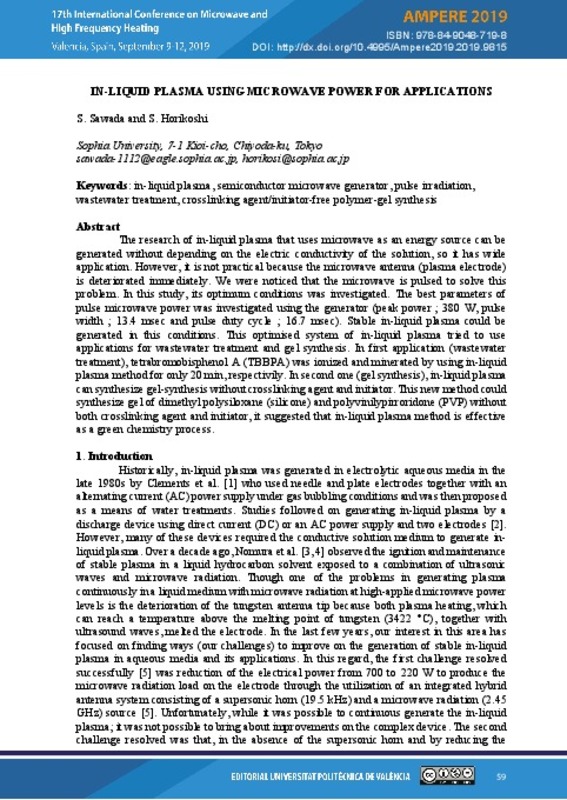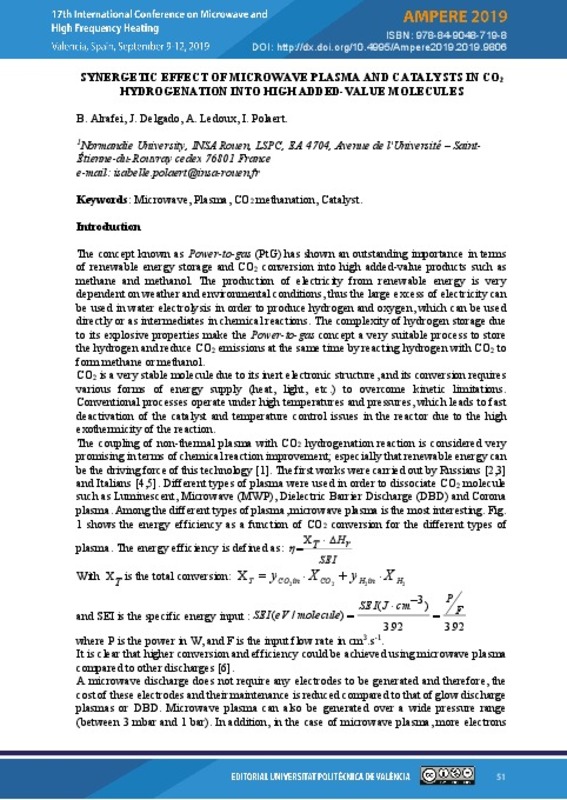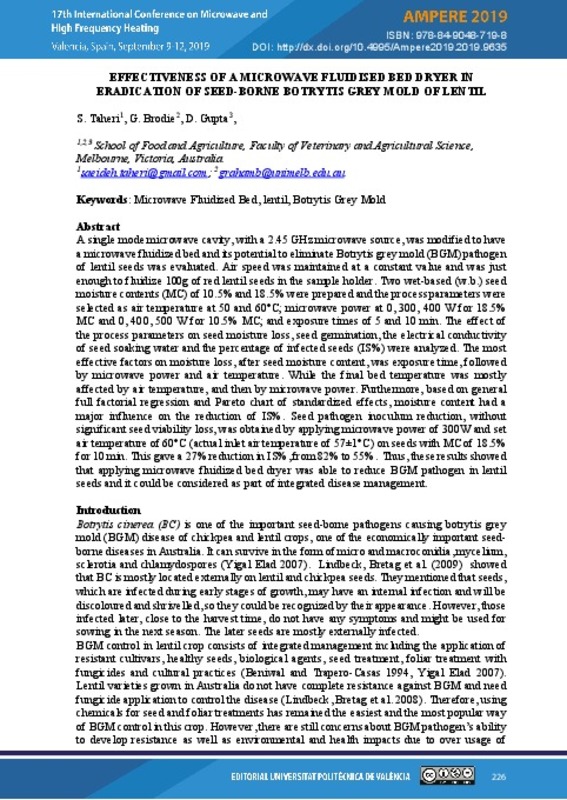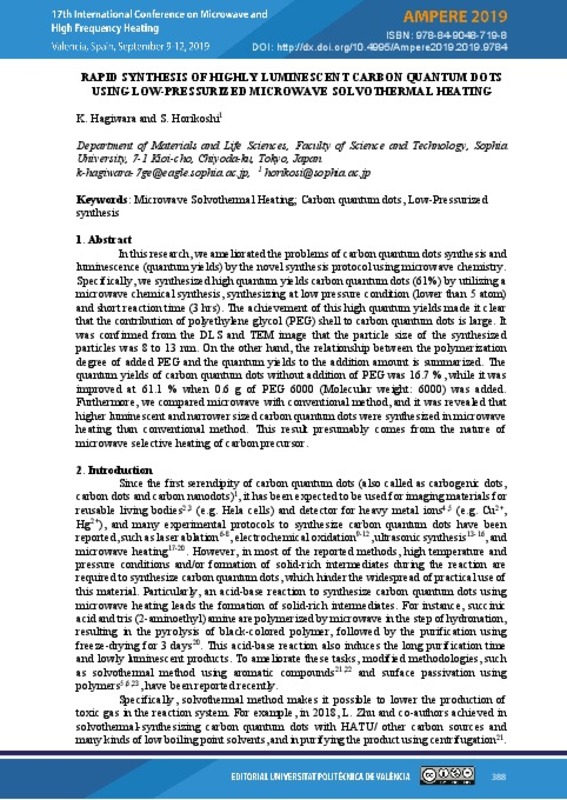JavaScript is disabled for your browser. Some features of this site may not work without it.
Buscar en RiuNet
Listar
Mi cuenta
Estadísticas
Ayuda RiuNet
Admin. UPV
In-liquid plasma using microwave power for applications
Mostrar el registro sencillo del ítem
Ficheros en el ítem
| dc.contributor.author | Sawada, S.
|
es_ES |
| dc.contributor.author | Horikoshi, Satoshi
|
es_ES |
| dc.date.accessioned | 2019-11-04T07:39:32Z | |
| dc.date.available | 2019-11-04T07:39:32Z | |
| dc.date.issued | 2019-10-15 | |
| dc.identifier.isbn | 9788490487198 | |
| dc.identifier.uri | http://hdl.handle.net/10251/130157 | |
| dc.description.abstract | [EN] The research of in-liquid plasma that uses microwave as an energy source can be generated without depending on the electric conductivity of the solution, so it has wide application. However, it is not practical because the microwave antenna (plasma electrode) is deteriorated immediately. We were noticed that the microwave is pulsed to solve this problem. In this study, its optimum conditions was investigated. The best parameters of pulse microwave power was investigated using the generator (peak power ; 380 W, pulse width ; 13.4 msec and pulse duty cycle ; 16.7 msec). Stable in-liquid plasma could be generated in this conditions. This optimised system of in-liquid plasma tried to use applications for wastewater treatment and gel synthesis. In first application (wastewater treatment), tetrabromobisphenol A (TBBPA) was ionized and minerated by using in-liquid plasma method for only 20 min, respectivily. In second one (gel synthesis), in-liquid plasma can synthesize gel-synthesis without crosslinking agent and initiator. This new method could synthesize gel of dimethyl polysiloxane (silicone) and polyvinilypirroridone (PVP) without both crosslinking agent and initiator, it suggested that in-liquid plasma method is effective as a green chemistry process. | es_ES |
| dc.format.extent | 8 | es_ES |
| dc.language | Inglés | es_ES |
| dc.publisher | Editorial Universitat Politècnica de València | es_ES |
| dc.relation.ispartof | AMPERE 2019. 17th International Conference on Microwave and High Frequency Heating | es_ES |
| dc.rights | Reconocimiento - No comercial - Sin obra derivada (by-nc-nd) | es_ES |
| dc.subject | Energy Production by Microwaves | es_ES |
| dc.subject | Microwave CVD | es_ES |
| dc.subject | EM Modelling | es_ES |
| dc.subject | Microwave Material interaction | es_ES |
| dc.subject | Dielectric Properties | es_ES |
| dc.subject | Dielectric Properties Measurement | es_ES |
| dc.subject | Solid State Microwave | es_ES |
| dc.subject | Microwave Processing | es_ES |
| dc.subject | Microwave Chemistry | es_ES |
| dc.subject | Microwave applicators design | es_ES |
| dc.subject | In-liquid plasma | es_ES |
| dc.subject | Semiconductor microwave generator | es_ES |
| dc.subject | Pulse irradiation | es_ES |
| dc.subject | Wastewater treatment | es_ES |
| dc.subject | Crosslinking agent/initiator-free polymer-gel synthesis | es_ES |
| dc.title | In-liquid plasma using microwave power for applications | es_ES |
| dc.type | Capítulo de libro | es_ES |
| dc.type | Comunicación en congreso | es_ES |
| dc.identifier.doi | 10.4995/AMPERE2019.2019.9815 | |
| dc.rights.accessRights | Abierto | es_ES |
| dc.description.bibliographicCitation | Sawada, S.; Horikoshi, S. (2019). In-liquid plasma using microwave power for applications. En AMPERE 2019. 17th International Conference on Microwave and High Frequency Heating. Editorial Universitat Politècnica de València. 59-66. https://doi.org/10.4995/AMPERE2019.2019.9815 | es_ES |
| dc.description.accrualMethod | OCS | es_ES |
| dc.relation.conferencename | Ampere 2019 | es_ES |
| dc.relation.conferencedate | Septiembre 09-12, 2019 | es_ES |
| dc.relation.conferenceplace | Valencia, Spain | es_ES |
| dc.relation.publisherversion | http://ocs.editorial.upv.es/index.php/AMPERE2019/AMPERE2019/paper/view/9815 | es_ES |
| dc.description.upvformatpinicio | 59 | es_ES |
| dc.description.upvformatpfin | 66 | es_ES |
| dc.type.version | info:eu-repo/semantics/publishedVersion | es_ES |
| dc.relation.pasarela | OCS\9815 | es_ES |
Este ítem aparece en la(s) siguiente(s) colección(ones)
-
Ampere 2019 [66]











